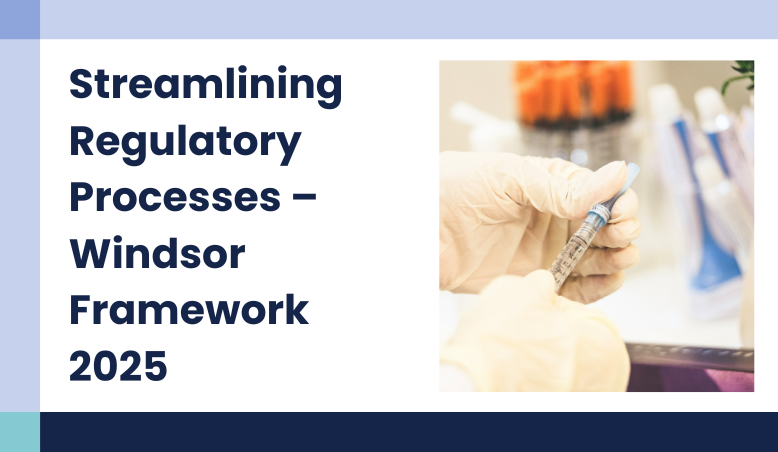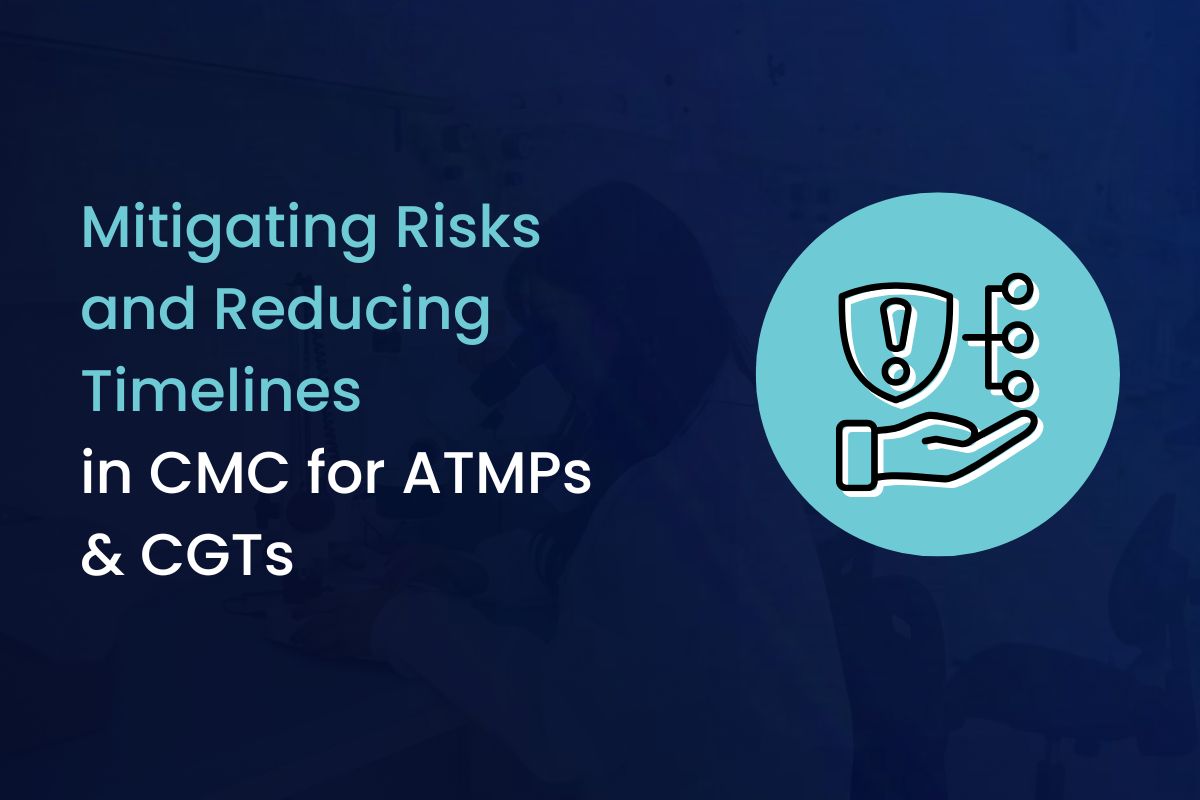Common Challenges in DMF Submissions and How to Avoid Them
The Latest on IDMP Implementation: How New Standards Are Reshaping Pharmaceutical Operations

23 Apr, 2024
[fusion_builder_container hundred_percent=”no” hundred_percent_height=”no” hundred_percent_height_scroll=”no” hundred_percent_height_center_content=”yes” equal_height_columns=”no” hide_on_mobile=”small-visibility,medium-visibility,large-visibility” status=”published” border_style=”solid” margin_top=”0″ padding_top=”0px” gradient_start_position=”0″ gradient_end_position=”100″ gradient_type=”linear” radial_direction=”center center” linear_angle=”180″ background_position=”center center” background_repeat=”no-repeat” fade=”no” background_parallax=”none” enable_mobile=”no” parallax_speed=”0.3″ background_blend_mode=”none” video_aspect_ratio=”16:9″ video_loop=”yes” video_mute=”yes” filter_hue=”0″ filter_saturation=”100″ filter_brightness=”100″ filter_contrast=”100″ filter_invert=”0″ filter_sepia=”0″ filter_opacity=”100″ filter_blur=”0″ filter_hue_hover=”0″ filter_saturation_hover=”100″ filter_brightness_hover=”100″ filter_contrast_hover=”100″ filter_invert_hover=”0″ filter_sepia_hover=”0″ filter_opacity_hover=”100″ filter_blur_hover=”0″ type=”legacy” admin_toggled=”no”][fusion_builder_row][fusion_builder_column type=”1_1″ type=”1_1″ layout=”1_1″ spacing=”yes” center_content=”no” target=”_self” hide_on_mobile=”small-visibility,medium-visibility,large-visibility” hover_type=”none” border_style=”solid” border_position=”all” box_shadow=”no” box_shadow_blur=”0″ box_shadow_spread=”0″ padding_top=”0″ margin_top=”0px” margin_bottom=”0px” background_type=”single” gradient_start_position=”0″ gradient_end_position=”100″ gradient_type=”linear” radial_direction=”center center” linear_angle=”180″ background_position=”left top” background_repeat=”no-repeat” background_blend_mode=”none” animation_direction=”left” animation_speed=”0.3″ filter_type=”regular” filter_hue=”0″ filter_saturation=”100″ filter_brightness=”100″ filter_contrast=”100″ filter_invert=”0″ filter_sepia=”0″ filter_opacity=”100″ filter_blur=”0″ filter_hue_hover=”0″ filter_saturation_hover=”100″ filter_brightness_hover=”100″ filter_contrast_hover=”100″ filter_invert_hover=”0″ filter_sepia_hover=”0″ filter_opacity_hover=”100″ filter_blur_hover=”0″ last=”true” border_sizes_top=”0″ border_sizes_bottom=”0″ border_sizes_left=”0″ border_sizes_right=”0″ first=”true” min_height=”” link=””][fusion_imageframe image_id=”19042|full” custom_aspect_ratio=”100″ lightbox=”no” alt=”Strategies for Successful PMCF under EU MDR – Celegence” linktarget=”_self” hide_on_mobile=”small-visibility,medium-visibility,large-visibility” sticky_display=”normal,sticky” align_medium=”none” align_small=”none” align=”none” hover_type=”none” magnify_duration=”120″ scroll_height=”100″ scroll_speed=”1″ caption_style=”off” caption_align_medium=”none” caption_align_small=”none” caption_align=”none” caption_title_tag=”2″ animation_direction=”left” animation_speed=”0.3″ animation_delay=”0″ filter_hue=”0″ filter_saturation=”100″ filter_brightness=”100″ filter_contrast=”100″ filter_invert=”0″ filter_sepia=”0″ filter_opacity=”100″ filter_blur=”0″ filter_hue_hover=”0″ filter_saturation_hover=”100″ filter_brightness_hover=”100″ filter_contrast_hover=”100″ filter_invert_hover=”0″ filter_sepia_hover=”0″ filter_opacity_hover=”100″ filter_blur_hover=”0″]https://www.celegence.com/wp-content/uploads/2024/04/The-Latest-on-IDMP-Implementation-How-New-Standards-Are-Reshaping-Pharmaceutical-Operations-cover.png[/fusion_imageframe][fusion_separator style_type=”single solid” hide_on_mobile=”small-visibility,medium-visibility,large-visibility” sticky_display=”normal,sticky” flex_grow=”0″ top_margin=”30px” alignment=”center” /][fusion_text hide_on_mobile=”small-visibility,medium-visibility,large-visibility” sticky_display=”normal,sticky” animation_direction=”left” animation_speed=”0.3″ animation_delay=”0″]
In a recent webinar titled “Navigating IDMP Implementation: Strategies for Success” Regulatory Affairs Experts Sowmya Raju and Michiel Stam offered a clear and informative overview. Discussing the essential elements of IDMP standards and their practical implementation through the Product Lifecycle Management (PLM) portal and highlighting their impact on the pharmaceutical industry’s regulatory landscape.
Access the full webinar for detailed insights.
[/fusion_text][fusion_text hide_on_mobile=”small-visibility,medium-visibility,large-visibility” sticky_display=”normal,sticky” animation_direction=”left” animation_speed=”0.3″ animation_delay=”0″]
The pharmaceutical industry is on the brink of a significant transformation, all thanks to the global implementation of the Identification of Medicinal Products (IDMP) standards. If you’re a stakeholder in this sector, whether you’re in regulatory affairs, product management, or IT, understanding the IDMP and its implications is now more crucial than ever. Today, let’s delve into what IDMP entails, the role of Product Lifecycle Management (PLM) portals, and how these changes are shaping the future of pharmaceutical regulations.
[/fusion_text][fusion_title title_type=”text” marquee_direction=”left” marquee_speed=”15000″ rotation_effect=”bounceIn” display_time=”1200″ highlight_effect=”circle” loop_animation=”off” highlight_width=”9″ highlight_top_margin=”0″ title_link=”off” link_target=”_self” hide_on_mobile=”small-visibility,medium-visibility,large-visibility” sticky_display=”normal,sticky” content_align=”left” size=”1″ text_shadow=”no” text_shadow_blur=”0″ text_stroke=”no” text_stroke_size=”1″ text_overflow=”none” gradient_font=”no” gradient_start_position=”0″ gradient_end_position=”100″ gradient_type=”linear” radial_direction=”center center” linear_angle=”180″ style_type=”default” animation_direction=”left” animation_speed=”0.3″ animation_delay=”0″]
Key Takeaways
[/fusion_title][fusion_text hide_on_mobile=”small-visibility,medium-visibility,large-visibility” sticky_display=”normal,sticky” animation_direction=”left” animation_speed=”0.3″ animation_delay=”0″]
- Discover the Digital Revolution in Regulatory Management: Learn how the integration of PLM tools like EAF, EPI, and PMS is setting new standards in the regulatory landscape, promising unparalleled efficiency and compliance.
- Peek into the Future of Drug Safety: Explore the pivotal role of IDMP standards in enhancing drug safety and efficacy, and how these standards foster a safer pharmaceutical environment.
- Get Ahead with Insider Implementation Strategies: Gain insights from the frontline of IDMP implementation, including real-world challenges and strategic solutions that are defining the future of medicinal product management.
- Master the Art of Navigating Regulatory Complexities: Understand the intricacies of adapting to new regulations across different jurisdictions and the innovative solutions being employed to overcome these hurdles.
- Prepare for Tomorrow’s Regulatory Environment Today: Learn from the experts on how to equip yourself and your organization to thrive in a rapidly evolving regulatory field, with practical steps and expert advice.
[/fusion_text][fusion_title title_type=”text” marquee_direction=”left” marquee_speed=”15000″ rotation_effect=”bounceIn” display_time=”1200″ highlight_effect=”circle” loop_animation=”off” highlight_width=”9″ highlight_top_margin=”0″ title_link=”off” link_target=”_self” hide_on_mobile=”small-visibility,medium-visibility,large-visibility” sticky_display=”normal,sticky” content_align=”left” size=”2″ text_shadow=”no” text_shadow_blur=”0″ text_stroke=”no” text_stroke_size=”1″ text_overflow=”none” gradient_font=”no” gradient_start_position=”0″ gradient_end_position=”100″ gradient_type=”linear” radial_direction=”center center” linear_angle=”180″ style_type=”default” animation_direction=”left” animation_speed=”0.3″ animation_delay=”0″]
What’s Driving the Digital Transformation in Pharmaceuticals?
[/fusion_title][fusion_text hide_on_mobile=”small-visibility,medium-visibility,large-visibility” sticky_display=”normal,sticky” animation_direction=”left” animation_speed=”0.3″ animation_delay=”0″]
IDMP’s primary goal is to standardize the description of medicinal products globally. This isn’t just a regulatory requirement—it’s a strategic move to enhance drug safety, quality, and efficacy through superior IDMP data management. For the industry, this means more streamlined operations, fewer errors, and improved transparency, which are essential in a field where precision is paramount.
[/fusion_text][fusion_title title_type=”text” marquee_direction=”left” marquee_speed=”15000″ rotation_effect=”bounceIn” display_time=”1200″ highlight_effect=”circle” loop_animation=”off” highlight_width=”9″ highlight_top_margin=”0″ title_link=”off” link_target=”_self” hide_on_mobile=”small-visibility,medium-visibility,large-visibility” sticky_display=”normal,sticky” content_align=”left” size=”2″ text_shadow=”no” text_shadow_blur=”0″ text_stroke=”no” text_stroke_size=”1″ text_overflow=”none” gradient_font=”no” gradient_start_position=”0″ gradient_end_position=”100″ gradient_type=”linear” radial_direction=”center center” linear_angle=”180″ style_type=”default” animation_direction=”left” animation_speed=”0.3″ animation_delay=”0″]
What is the PLM Portal and Why Does It Matter?
[/fusion_title][fusion_text hide_on_mobile=”small-visibility,medium-visibility,large-visibility” sticky_display=”normal,sticky” animation_direction=”left” animation_speed=”0.3″ animation_delay=”0″]
A key component of the IDMP framework is the Product Lifecycle Management (PLM) portal, part of the broader Electronic Medicines Regulatory (EMR) framework. This digital platform is a suite of tools designed to digitize and simplify regulatory processes:
- Electronic Application Form (eAF): Simplifies the creation of application forms.
- Electronic Product Information (ePI): Acts as a repository for all product information.
- Product Management Services (PMS): Oversees the management of medicinal product data.
These tools are intended to transform regulatory procedures into more efficient and error-resistant processes.
[/fusion_text][fusion_title title_type=”text” marquee_direction=”left” marquee_speed=”15000″ rotation_effect=”bounceIn” display_time=”1200″ highlight_effect=”circle” loop_animation=”off” highlight_width=”9″ highlight_top_margin=”0″ title_link=”off” link_target=”_self” hide_on_mobile=”small-visibility,medium-visibility,large-visibility” sticky_display=”normal,sticky” content_align=”left” size=”2″ text_shadow=”no” text_shadow_blur=”0″ text_stroke=”no” text_stroke_size=”1″ text_overflow=”none” gradient_font=”no” gradient_start_position=”0″ gradient_end_position=”100″ gradient_type=”linear” radial_direction=”center center” linear_angle=”180″ style_type=”default” animation_direction=”left” animation_speed=”0.3″ animation_delay=”0″]
What’s Happening Now? The Current State of IDMP Implementation
[/fusion_title][fusion_text hide_on_mobile=”small-visibility,medium-visibility,large-visibility” sticky_display=”normal,sticky” animation_direction=”left” animation_speed=”0.3″ animation_delay=”0″]
EMA aims to migrate the Centrally Authorised Products (CAPs) and non-Centrally Authorised Products (non-CAPs) data held in the extended EudraVigilance Medicinal Product Dictionary (XEVMPD) submitted by marketing authorisation holders (MAHs) under the Art.57 (2) legal requirement into the ISO lDMP-compliant data format. The transformed data will be loaded into the Product Management Service (PMS).
- In Q1-Q2 of 2024 EMA suggested Applicants to check XEVMPD data to avoid data migration issues.
- Data Quality issue should be handled in XEVMPD. It will be propagated to PMS.
- EMA is monitoring and identifying Data Quality issues.
- Ensure QPPV/company email is monitored since EMA is contacting/will contact QPPVs requesting the update of XEVMPD to solve data quality issues.
- Don’t send emails from “Art57-QC@ema.europa.eu” to the spam folder.
- Review 3rd Acknowledgement after EMA perform validations and if needed, update your systems. If don’t agree with Itie change, raise a ticket to Service Now.
- For records where “Product Validity* is “Not Assessed”, review the reason why it was not assessed. It might be a duplicate of another record or there is missing information/documentation.
- These activities will reduce the amount of data quality issues leading to a better initial migration of product data.
[/fusion_text][fusion_table fusion_table_type=”1″ fusion_table_rows=”13″ fusion_table_columns=”2″ hide_on_mobile=”small-visibility,medium-visibility,large-visibility” animation_direction=”left” animation_speed=”0.3″ animation_delay=”0″]
| XEVMPD Data Points | Recommendation to Applicants by EMA |
|---|---|
| Legal Basis | Marketing Authorisation Application Legal Basis cannot be null/empty |
| Product Full Name | Check that product full name is consistent (no spaces. typos etc.) across similar/grouped EV codes |
| Authorisation Number | For CP ensure it aligns with Annex A |
| EU Number | For CAPs is the same a s the Authorisation number |
| MRP/CP Number | For CP ensure it aligns with Annex A For BE products is consistent across grouped EV codes |
| Autharised Dose Form | Check mapping across EV and RMS |
| Administrable Dose Form | Refers to the dose form administered to the patient (might not be the same as the authorised dose form) |
| Active Substance | Check mapping to SMS, If SVG flag=0 select another substance for the product |
| Strength | is consistent among EV codes to be grouped |
| MAH | Check mapping to OMS (LOC ID) (if missing/wrong, open a request in Service now to correct the mappings) |
| Packages | Ensure all packages for CAPs are entered separately (one EV code per package), even if they were withdrawn/surrendered |
| Authorisation Status | Check it is the correct one not only for valid but also withdrawn. Transferred records shall have the status “non-valid superseded by MA transfer” |
[/fusion_table][fusion_separator style_type=”none” hide_on_mobile=”small-visibility,medium-visibility,large-visibility” top_margin=”30px” alignment=”center” /][fusion_text hide_on_mobile=”small-visibility,medium-visibility,large-visibility” sticky_display=”normal,sticky” animation_direction=”left” animation_speed=”0.3″ animation_delay=”0″]
For more details please refer:
- Chapter 7: XEVMPD and SIAMED II to PMS — Initial migration guide Ver 3
- PMS Deep-Dive Webinar held on 22-Feb-2024
- Product Management Service (PMS) Info-Day on 16-April-2024
[/fusion_text][fusion_title title_type=”text” marquee_direction=”left” marquee_speed=”15000″ rotation_effect=”bounceIn” display_time=”1200″ highlight_effect=”circle” loop_animation=”off” highlight_width=”9″ highlight_top_margin=”0″ title_link=”off” link_target=”_self” hide_on_mobile=”small-visibility,medium-visibility,large-visibility” sticky_display=”normal,sticky” content_align=”left” size=”2″ text_shadow=”no” text_shadow_blur=”0″ text_stroke=”no” text_stroke_size=”1″ text_overflow=”none” gradient_font=”no” gradient_start_position=”0″ gradient_end_position=”100″ gradient_type=”linear” radial_direction=”center center” linear_angle=”180″ style_type=”default” animation_direction=”left” animation_speed=”0.3″ animation_delay=”0″]
Why Set These Strategic Goals?
[/fusion_title][fusion_text hide_on_mobile=”small-visibility,medium-visibility,large-visibility” sticky_display=”normal,sticky” animation_direction=”left” animation_speed=”0.3″ animation_delay=”0″]
The implementation of the PLM portal aims to achieve several strategic objectives:
- Data Standardization: Ensuring data consistency across global regulatory submissions.
- Regulatory Process Streamlining: Making regulatory procedures faster and more efficient.
- Data Quality Improvement: Enhancing the accuracy and reliability of regulatory data.
[/fusion_text][fusion_title title_type=”text” marquee_direction=”left” marquee_speed=”15000″ rotation_effect=”bounceIn” display_time=”1200″ highlight_effect=”circle” loop_animation=”off” highlight_width=”9″ highlight_top_margin=”0″ title_link=”off” link_target=”_self” hide_on_mobile=”small-visibility,medium-visibility,large-visibility” sticky_display=”normal,sticky” content_align=”left” size=”2″ text_shadow=”no” text_shadow_blur=”0″ text_stroke=”no” text_stroke_size=”1″ text_overflow=”none” gradient_font=”no” gradient_start_position=”0″ gradient_end_position=”100″ gradient_type=”linear” radial_direction=”center center” linear_angle=”180″ style_type=”default” animation_direction=”left” animation_speed=”0.3″ animation_delay=”0″]
What Challenges Lie Ahead? Navigating Future Obstacles
[/fusion_title][fusion_text hide_on_mobile=”small-visibility,medium-visibility,large-visibility” sticky_display=”normal,sticky” animation_direction=”left” animation_speed=”0.3″ animation_delay=”0″]
Adopting new systems comes with its challenges. In the pharmaceutical sector, these include the need for precise data mapping and navigating diverse regulatory requirements across different regions. Embracing advanced data management and technology solutions is crucial for overcoming these hurdles.
[/fusion_text][fusion_title title_type=”text” marquee_direction=”left” marquee_speed=”15000″ rotation_effect=”bounceIn” display_time=”1200″ highlight_effect=”circle” loop_animation=”off” highlight_width=”9″ highlight_top_margin=”0″ title_link=”off” link_target=”_self” hide_on_mobile=”small-visibility,medium-visibility,large-visibility” sticky_display=”normal,sticky” content_align=”left” size=”2″ text_shadow=”no” text_shadow_blur=”0″ text_stroke=”no” text_stroke_size=”1″ text_overflow=”none” gradient_font=”no” gradient_start_position=”0″ gradient_end_position=”100″ gradient_type=”linear” radial_direction=”center center” linear_angle=”180″ style_type=”default” animation_direction=”left” animation_speed=”0.3″ animation_delay=”0″]
How Can You Stay Ahead? Practical Advice for Navigating Changes
[/fusion_title][fusion_text hide_on_mobile=”small-visibility,medium-visibility,large-visibility” sticky_display=”normal,sticky” animation_direction=”left” animation_speed=”0.3″ animation_delay=”0″]
For those in the industry, adapting to these changes is pivotal. Here’s how you can stay prepared:
- Stay Informed: Regularly update yourself with the latest guidelines and standards.
- Engage in Training: Participate in relevant training sessions and webinars to understand the operational aspects of new systems.
- Leverage Technology: Utilize innovative software and tools designed to aid IDMP compliance.
[/fusion_text][fusion_text hide_on_mobile=”small-visibility,medium-visibility,large-visibility” sticky_display=”normal,sticky” animation_direction=”left” animation_speed=”0.3″ animation_delay=”0″]
- Expert Regulatory Consulting with industry-leading expertise.
- Advanced Tech Solutions for compliance and efficiency.
- Your Extended Team focusing on your core activities.
- Custom Compliance Strategies to meet regulatory needs.
Contact Us at info@celegence.com for expert support.
[/fusion_text][fusion_separator style_type=”none” hide_on_mobile=”small-visibility,medium-visibility,large-visibility” top_margin=”30px” alignment=”center” /][fusion_title title_type=”text” marquee_direction=”left” marquee_speed=”15000″ rotation_effect=”bounceIn” display_time=”1200″ highlight_effect=”circle” loop_animation=”off” highlight_width=”9″ highlight_top_margin=”0″ title_link=”off” link_target=”_self” hide_on_mobile=”small-visibility,medium-visibility,large-visibility” sticky_display=”normal,sticky” content_align=”left” size=”2″ text_shadow=”no” text_shadow_blur=”0″ text_stroke=”no” text_stroke_size=”1″ text_overflow=”none” gradient_font=”no” gradient_start_position=”0″ gradient_end_position=”100″ gradient_type=”linear” radial_direction=”center center” linear_angle=”180″ style_type=”default” animation_direction=”left” animation_speed=”0.3″ animation_delay=”0″]
Conclusion: Embracing Change in the Pharmaceutical Landscape
[/fusion_title][fusion_text hide_on_mobile=”small-visibility,medium-visibility,large-visibility” sticky_display=”normal,sticky” animation_direction=”left” animation_speed=”0.3″ animation_delay=”0″]
The shift towards a more integrated and efficient regulatory environment is inevitable, and IDMP is at the forefront of this change. By understanding and adapting to these new systems, industry professionals can ensure that their organizations not only comply with new regulations but also gain a competitive edge in the process. Let’s gear up for this transformation, for it promises a future where safety and efficacy are even more closely interwoven into the fabric of pharmaceutical operations.
Explore how Celegence can enhance your regulatory processes.
[/fusion_text][/fusion_builder_column][/fusion_builder_row][/fusion_builder_container][fusion_builder_container hundred_percent=”no” hundred_percent_height=”no” hundred_percent_height_scroll=”no” hundred_percent_height_center_content=”yes” equal_height_columns=”no” hide_on_mobile=”small-visibility,medium-visibility,large-visibility” status=”published” border_style=”solid” gradient_start_position=”0″ gradient_end_position=”100″ gradient_type=”linear” radial_direction=”center center” linear_angle=”180″ background_position=”center center” background_repeat=”no-repeat” fade=”no” background_parallax=”none” enable_mobile=”no” parallax_speed=”0.3″ background_blend_mode=”none” video_aspect_ratio=”16:9″ video_loop=”yes” video_mute=”yes” filter_hue=”0″ filter_saturation=”100″ filter_brightness=”100″ filter_contrast=”100″ filter_invert=”0″ filter_sepia=”0″ filter_opacity=”100″ filter_blur=”0″ filter_hue_hover=”0″ filter_saturation_hover=”100″ filter_brightness_hover=”100″ filter_contrast_hover=”100″ filter_invert_hover=”0″ filter_sepia_hover=”0″ filter_opacity_hover=”100″ filter_blur_hover=”0″ admin_toggled=”yes” type=”legacy”][fusion_builder_row][fusion_builder_column type=”1_1″ type=”1_1″ layout=”2_3″ center_content=”no” target=”_self” hide_on_mobile=”small-visibility,medium-visibility,large-visibility” hover_type=”none” border_style=”solid” border_position=”all” box_shadow=”no” box_shadow_blur=”0″ box_shadow_spread=”0″ background_type=”single” gradient_start_position=”0″ gradient_end_position=”100″ gradient_type=”linear” radial_direction=”center center” linear_angle=”180″ background_position=”left top” background_repeat=”no-repeat” background_blend_mode=”none” animation_direction=”left” animation_speed=”0.3″ filter_type=”regular” filter_hue=”0″ filter_saturation=”100″ filter_brightness=”100″ filter_contrast=”100″ filter_invert=”0″ filter_sepia=”0″ filter_opacity=”100″ filter_blur=”0″ filter_hue_hover=”0″ filter_saturation_hover=”100″ filter_brightness_hover=”100″ filter_contrast_hover=”100″ filter_invert_hover=”0″ filter_sepia_hover=”0″ filter_opacity_hover=”100″ filter_blur_hover=”0″ last=”true” border_sizes_top=”0″ border_sizes_bottom=”0″ border_sizes_left=”0″ border_sizes_right=”0″ first=”true” min_height=”” link=””][fusion_title title_type=”text” marquee_direction=”left” marquee_speed=”15000″ rotation_effect=”bounceIn” display_time=”1200″ highlight_effect=”circle” loop_animation=”off” highlight_width=”9″ highlight_top_margin=”0″ title_link=”off” link_target=”_self” hide_on_mobile=”small-visibility,medium-visibility,large-visibility” sticky_display=”normal,sticky” content_align=”left” size=”2″ text_shadow=”no” text_shadow_blur=”0″ text_stroke=”no” text_stroke_size=”1″ text_overflow=”none” gradient_font=”no” gradient_start_position=”0″ gradient_end_position=”100″ gradient_type=”linear” radial_direction=”center center” linear_angle=”180″ style_type=”default” animation_direction=”left” animation_speed=”0.3″ animation_delay=”0″]
Need pharmaceutical regulatory support?
[/fusion_title][fusion_text hide_on_mobile=”small-visibility,medium-visibility,large-visibility” sticky_display=”normal,sticky” animation_direction=”left” animation_speed=”0.3″ animation_delay=”0″]
Celegence, led by Sonia Veluchamy provides cutting-edge consulting services and technology-driven solutions that are tailored to the evolving operational and strategic needs of manufacturers. Our suite of pharmaceutical services allows you to focus on core activities while we work as an extended part of your regulatory team to ensure compliance and efficiency.
Contact us to discuss any regulatory concerns you might have and learn how our team of regulatory affairs consultants can help ensure successful regulatory outcomes for your product.
[/fusion_text][/fusion_builder_column][/fusion_builder_row][/fusion_builder_container]
Other Related Articles

27 Jun, 2025

05 Jun, 2025

29 May, 2025






